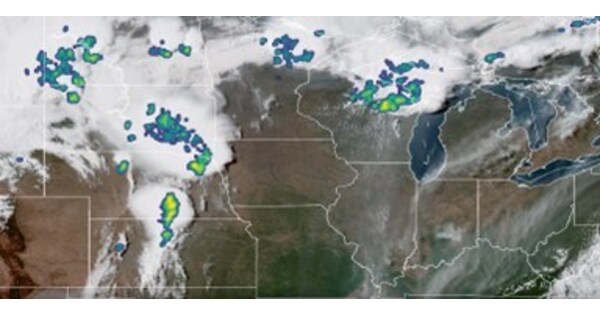Next-Generation GeoXO Lightning Mapper enhances capabilities of NOAA’s next-generation weather satellite system
DENVER, Sept. 18, 2024 /PRNewswire/ — NASA has awarded Lockheed Martin (NYSE: LMT) a contract to design and build the next-generation GeoXO Lightning Mapper (LMX) instruments for the National Oceanic and Atmospheric Administration (NOAA). The baseline contract is valued at approximately $297 million for two instruments with options for two additional instruments.
The Capabilities
LMX is a single-channel, near-infrared optical instrument developed specifically to detect, locate, and measure the intensity, duration and extent of lightning flashes in near-real-time.
The LMX instrument detects and measures lightning flashes while onboard NOAA’s next-generation GeoXO weather satellites. This lightning data will provide persistent severe weather observations of the Western Hemisphere, improving storm analysis and prediction, and aiding the detection of tornado-producing storms. The imagers will improve hurricane intensity calculations, lightning hazard detection, wildfire ignition detection and aviation threat avoidance.
LMX builds on the work of the first operational lightning mapper flown in geostationary orbit — the Lockheed Martin-built Geostationary Lightning Mapper (GLM). Specifically, LMX will improve on GLM with finer spatial resolution and faster imaging of lightning activity, in addition to a wider field of view of the Western Hemisphere, which will now include Alaska. Lockheed Martin will develop and build the LMX instruments at its Sunnyvale, California, facility.
“Lockheed Martin improved upon the success of the Geostationary Lighting Mapper and added game-changing technologies to the GeoXO Lightning Mapper, including an advanced imaging sensor that will potentially detect 25% more lightning pulses,” said Matthew Mahlman, director of Weather, Earth Science and Climate Intelligence at Lockheed Martin. “This advanced technology will give meteorologists a tool to create greater lead time in alerting people to severe storms and dangerous weather situations such as rapid intensifying hurricanes.”
Building on Success
The GeoXO weather satellite system is NOAA’s next generation of satellites following the successful Geostationary Operational Environmental Satellites (GOES) series – the last of which, GOES-U, launched on June 25, 2024. That satellite is now in geostationary orbit undergoing on-orbit checkout and verification and is has been renamed GOES-19.
In June, NASA awarded Lockheed Martin a contract to develop and build the GeoXO spacecraft, for NOAA. The baseline contract is for three spacecraft with options for four additional spacecraft. The total estimated value of the contract including options is $2.27 billion and first launch is planned for the early 2030s.
For over 50 years, Lockheed Martin has designed and built more than 120 weather and environmental spacecraft, and many Earth observation instruments for civil government, military and commercial applications. These one-of-a-kind instruments include the Solar Ultraviolet Imager (SUVI) – which is flying on the GOES-R series satellites – as well the as the Interface Region Imaging Spectrograph (IRIS) and James Webb Space Telescope’s primary infrared imager, NIRCam.
About Lockheed Martin
Lockheed Martin is a global defense technology company driving innovation and advancing scientific discovery. Our all-domain mission solutions and 21st Century Security vision accelerate the delivery of transformative technologies to ensure those we serve always stay ahead of ready. More information at Lockheedmartin.com.
SOURCE Lockheed Martin

WANT YOUR COMPANY’S NEWS FEATURED ON PRNEWSWIRE.COM?
440k+
Newsrooms &
Influencers
9k+
Digital Media
Outlets
270k+
Journalists
Opted In
